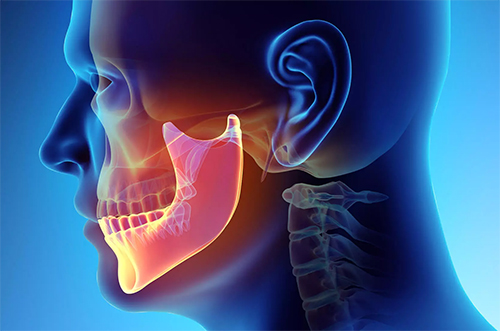TMJ Treatments Back

A number of factors may cause the temporomandibular joint (TMJ) to become irritated, inflamed, and painful. Overuse or inadequate patterning of the muscles that govern the jaw, sleeping posture, postural problems, grinding, jaw or dental surgery, or injury are all possible contributors. Fortunately, the great majority of people with TMJ issues react effectively to conservative treatment methods (such as physiotherapy). Physiotherapy is the most effective first-line treatment for TMJ discomfort or loss of movement.
TMJ dysfunction (abbreviated as 'TMD') is a disorder that causes discomfort in the jaw joint(s) and/or surrounding muscles. This disorder may cause substantial loss of function, including discomfort or reduced motion during eating, opening, and yawning. This disorder may affect either one or both sides of the jaw. Other signs of TMD dysfunction include clicking or crunching in the jaw, occasional locking when opening or shutting the mouth, headaches (typically in the 'temples' on the sides of the head), and neck discomfort and/or stiffness. Pain and stiffness symptoms are often more apparent in the morning and during or after meals.
You do not have to live with this condition. Surgery is not an option for the majority of individuals. Physiotherapy may successfully treat TMJ discomfort and dysfunction, as shown by a significant body of clinical research and the larger rehabilitation community.
In addition to hands-on treatment and exercise to improve jaw function, our TMJ physiotherapists in Alliston can assist their patients comprehend their problem. Educating patients on how to not only heal, but also how to care for their jaw muscles and joints to avoid future problems, is an essential component of good rehabilitation. A comprehensive approach to TMJ physiotherapy may successfully cure TMJ issues while lowering the likelihood of recurrence.
TMJ Physio Treatments include:
- Manual treatment aimed at restoring pain-free range of motion at the temporomandibular joint, alleviating pressure on the inflamed TMJ disc, and facilitating optimal joint gliding.
- Manual soft tissue manipulation and stretching of constricted jaw and cervical muscles.
- Training in jaw relaxation methods to facilitate the release of excessive tension in tight chewing muscles.
- Utilize dry needling or acupuncture to target trigger points in the jaw muscles and alleviate discomfort.
- Exercises to enhance strength and rectify muscular imbalances in the jaw, as well as to correct improper motor patterns during jaw opening and shutting motions.
- Recommendations about sleeping posture, masticatory patterns, and dietary adjustments, including the temporary alteration of meal size or texture to alleviate jaw stress and facilitate healing.
- Postural techniques to mitigate jaw discomfort resulting from ergonomic variables, including workplace configuration and forward head posture.
- Treatment of the neck, back, and even the pelvis. Joint constraints in these regions may negatively affect jaw positioning and movement patterns in some people.